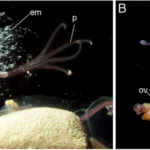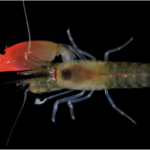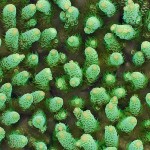
![]() Some readers dialed into the news might wonder why we have not blogged on a recent paper in Science by Halpren et al. In the paper the authors set out to provide a “synthesis of spatial data on the distribution and intensity of human activities and the overlap of their impacts on marine ecosystems” to “provide flexible tools for regional and global efforts to allocate conservation resources; to implement ecosystem-based
Some readers dialed into the news might wonder why we have not blogged on a recent paper in Science by Halpren et al. In the paper the authors set out to provide a “synthesis of spatial data on the distribution and intensity of human activities and the overlap of their impacts on marine ecosystems” to “provide flexible tools for regional and global efforts to allocate conservation resources; to implement ecosystem-based
management; and to inform marine spatial planning, education, and basic research.” Indeed this is the first attempt to assess our global footprint on the oceans. The delay results from my want to contemplate the implications of the paper and the model itself. With any model there are assumptions that can affect the model output and the conclusions we draw from it.
The study focuses on multiple impacts including: Nutrients (fertilizer); Organic pollutants (pesticides); Inorganic pollutants (impervious surfaces); Direct human (population density); Pelagic, low-bycatch fishing; Pelagic, high-bycatch fishing; Demersal, destructive fishing; Demersal, non-destructive, low-bycatch; Demersal, non-destructive, high-bycatch fishing; Artisanal fishing; Oil rigs; Invasive species; Ocean pollution; Shipping; Seasurface temperature; UV; and Ocean acidification. Overall an impressive list with substantial effort that produces the above map. Mark Spalding, a Nature Conservancy marine scientist who coauthors the study, states “I think the big surprise from all of this was seeing the complete coverage of human impacts…There’s nowhere really that escaped. It’s quite a shocking map to see.” Over 41% of the oceans are strongly impacted. Overfishing and climate change remain the two biggest threats.
Several habitats are given impact scores with a medium high score being near 4. The average across all localities for each habitat are: Coral Reefs (3.88), Seagrass (3.10), Rocky reefs (4.75), Hard Shelf (6.89), Hard Slope (2.64), Hard Deep (2.77), Pelagic Waters (2.76), Mangroves (4.30), Seamounts (3.10), Soft Shallow (1.52), Soft Shelf (4.68), Soft Slope (2.97), Soft Deep (3.79), Deep Waters (1.04). My only concern with this otherwise impressive study is the even weighting of effects across all habitat types that is applied. To clarify, as I understand, the model assumes the same fishing intensity produces the same impact irrespective of habitat. We know this not to be the case as deep-water fisheries are more sensitive due to slow growth, increased longevity, and overall lower densities. Several other examples could be drawn upon where different habitats have differential affects to the factors above (e.g. coral reefs and acidification). How are the numbers affected by this assumption? Despite this, the study provides a baseline that can be refined and points to future research priorities.
Halpern, B.S., Walbridge, S., Selkoe, K.A., Kappel, C.V., Micheli, F., D’Agrosa, C., Bruno, J.F., Casey, K.S., Ebert, C., Fox, H.E., Fujita, R., Heinemann, D., Lenihan, H.S., Madin, E.M., Perry, M.T., Selig, E.R., Spalding, M., Steneck, R., Watson, R. (2008). A Global Map of Human Impact on Marine Ecosystems. Science, 319(5865), 948-952. DOI: 10.1126/science.1149345




